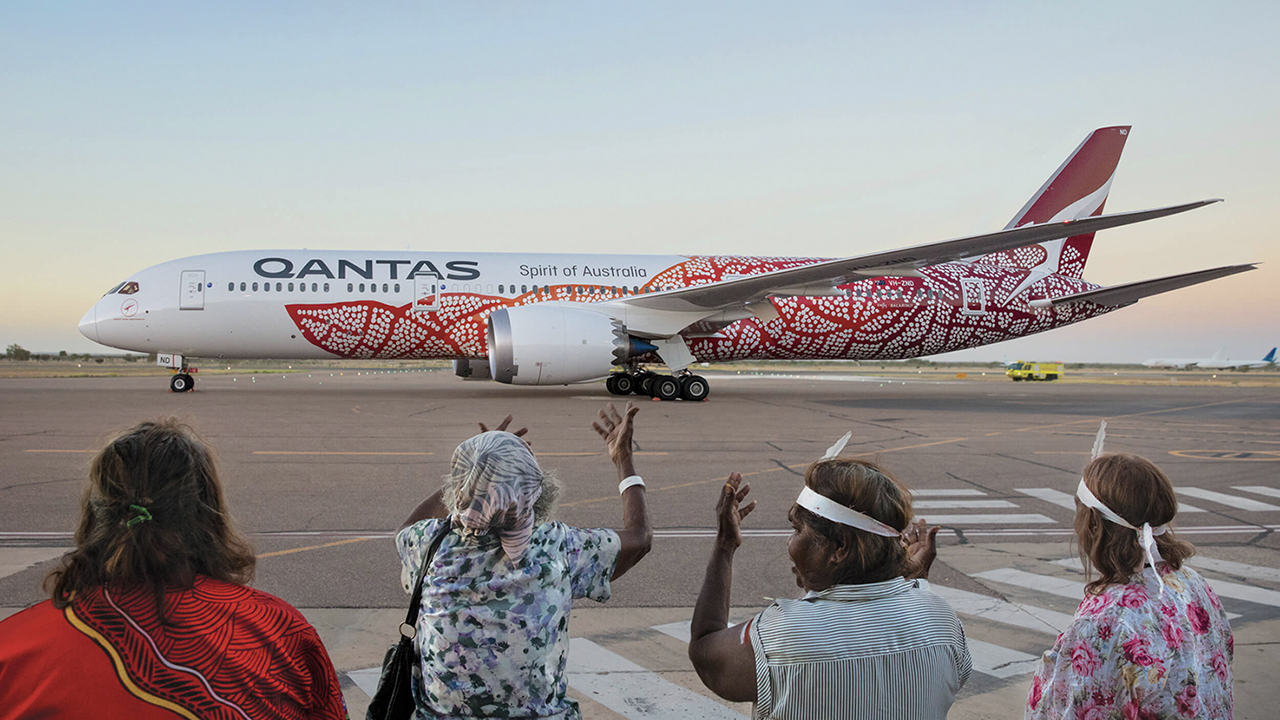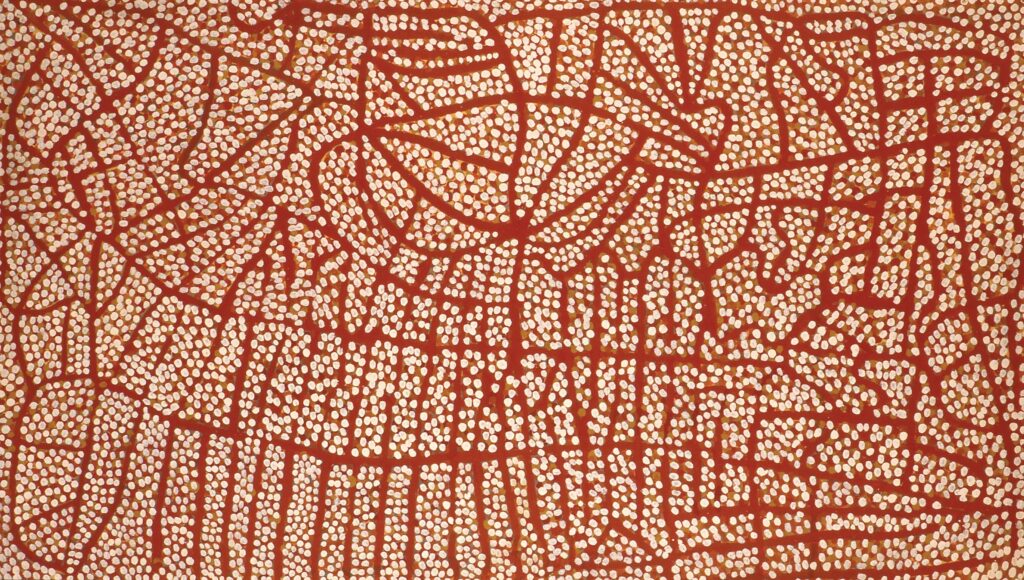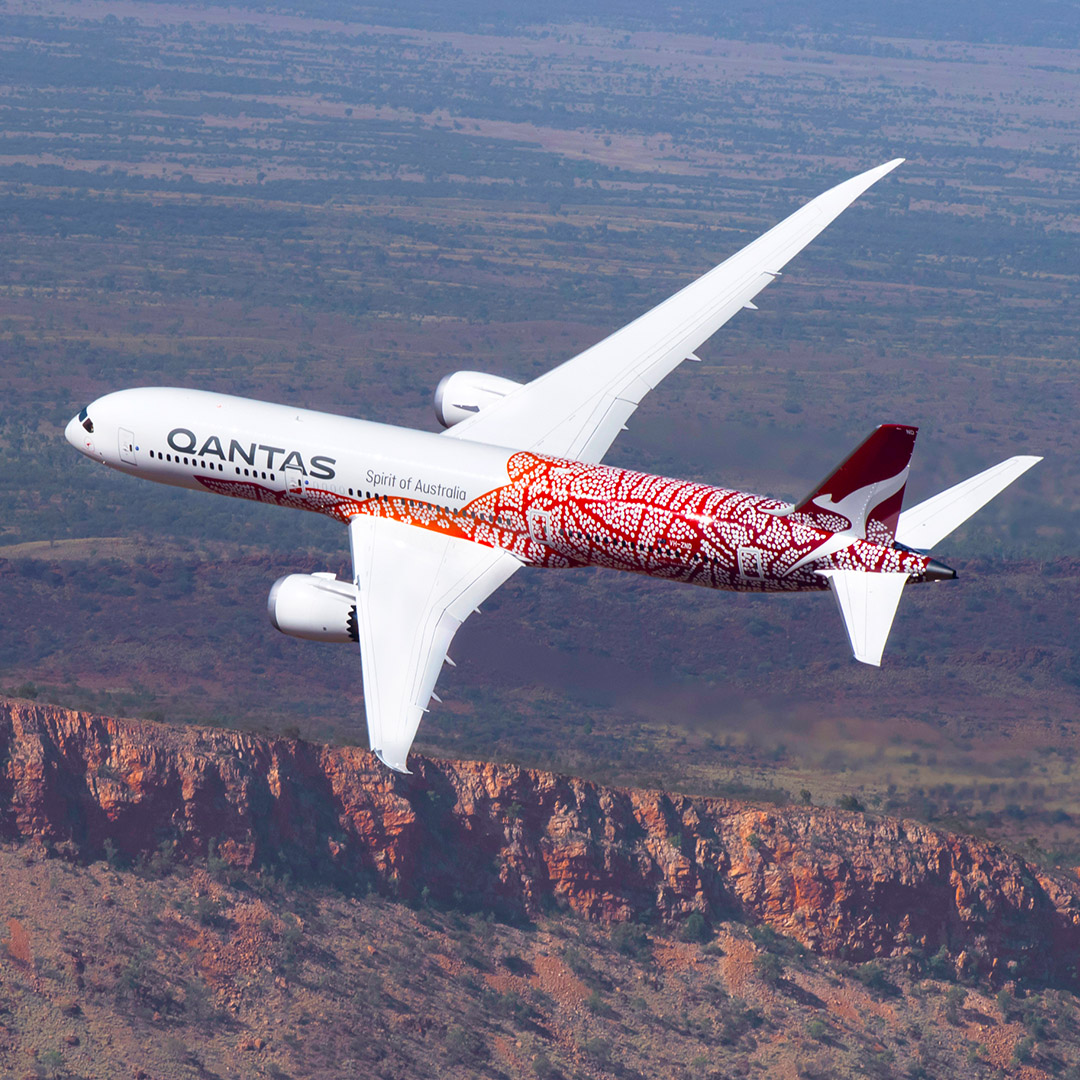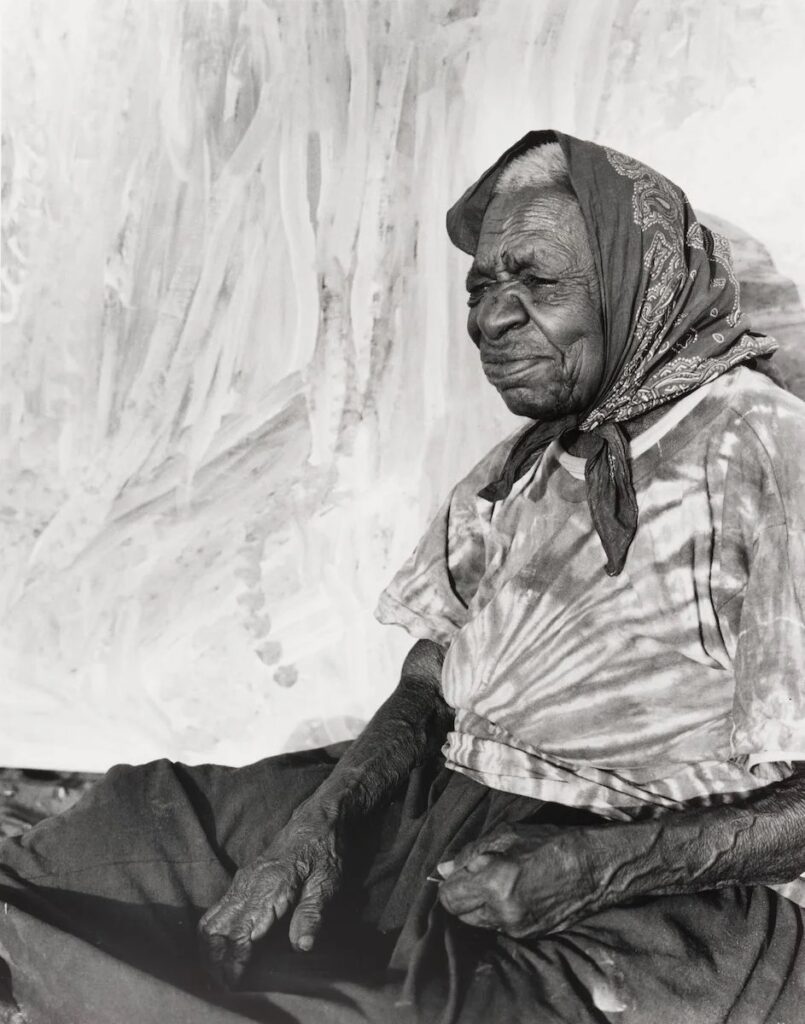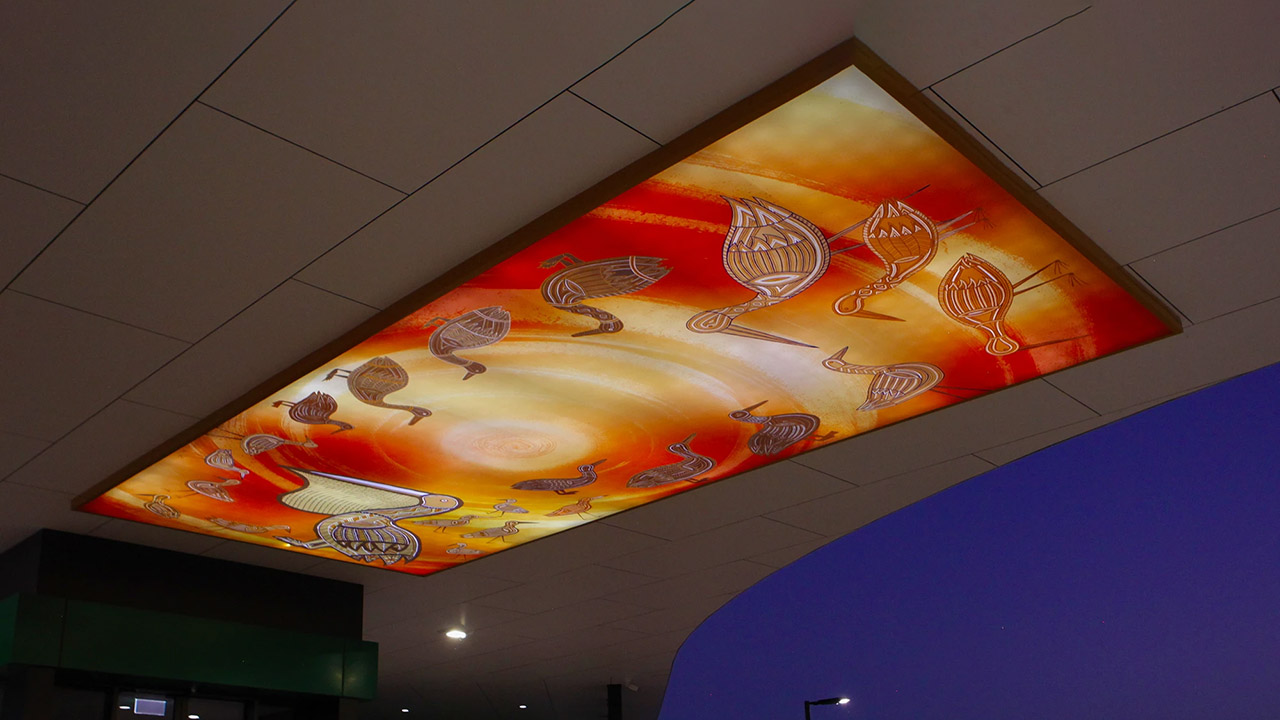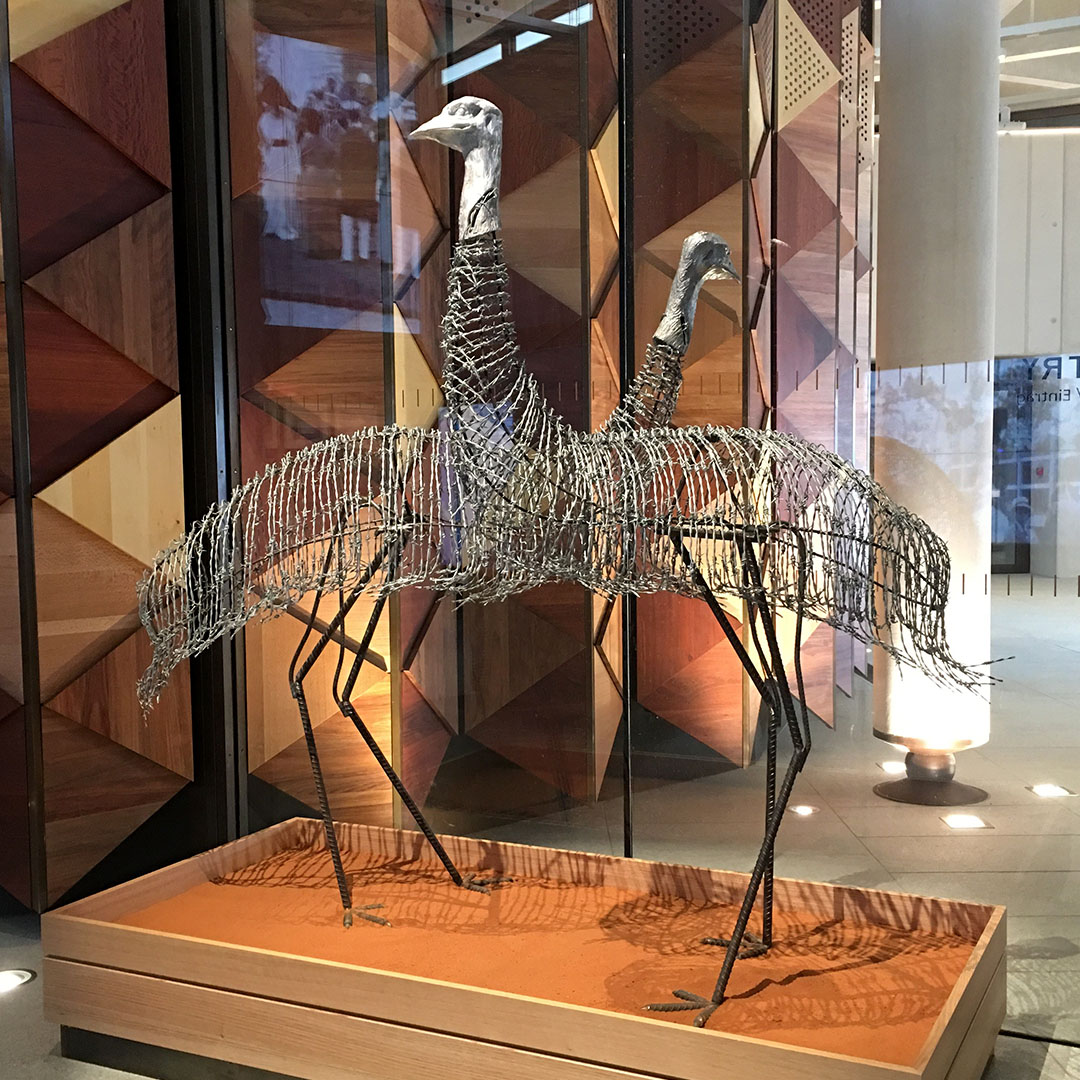A Qantas-Balarinji art aircraft typically takes two years from concept to launch. Over that time, Balarinji worked with Qantas Engineering, Boeing and Boeing’s design agency, Teague, to take a 2-D vision into 3-D renders and eventually onto the aircraft fuselage in the Boeing paint facility in Seattle, USA.
Balarinji deconstructs an original painting and reforms it as a design that works around a fuselage, in a way that responds to the viewer from all angles – from the ground, from an air bridge, in the sky. Scale, colour, distribution of motifs and compatibility with Qantas branding and safety requirements are carefully considered.
Some simplification of a painting like ‘Yam Dreaming’ was necessary to make it possible for Balarinji to create a design for a ‘canvas’ the size of a 787 Dreamliner.
Emily Kngwarreye’s subtle layers of colour-blended dots is interpreted as a base colour gradient that stretches the length of the fuselage.
More than 5000 individual dots identical in shape and placement to the original painting, were meticulously applied to achieve the sight lines from the ground and the air of a faithful representation of the original painting. The colours draw from Emily’s palette, and reflect the Central Australian landscape of her birth and life. Best practice Intellectual Property management ensured the integrity of the art was preserved in translation.
The Emily Kame Kngwarreye Dreamliner was recognised for its design excellence in celebrating Australian Aboriginal and Torres Strait Island art and culture and was awarded Gold in the Graphic Design – Identity and Branding category of the 2019 Sydney Design Awards.
